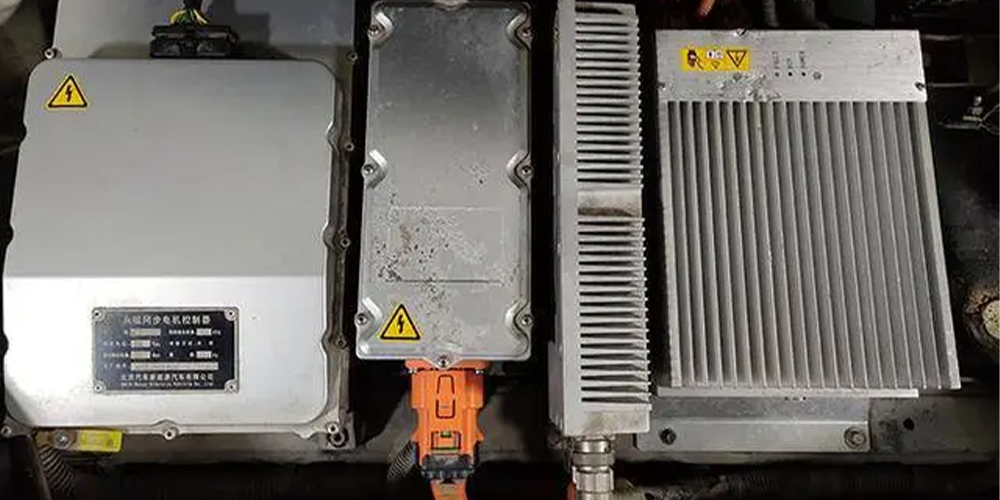
When we talk about electric vehicle (EV) powertrains, the spotlight usually lands on the massive high-voltage battery and the powerful motor. But working tirelessly behind the scenes is a silent, crucial component: the electric car DC-DC converter.
Without it, your EV wouldn't be able to power its lights, infotainment system, or even its essential computers. So, what exactly is this device, and why is it so indispensable?
To understand the electric car DC-DC converter, you first need to know that every EV operates two separate electrical systems:
The High-Voltage System: This is the main event. The traction battery (often 400V or 800V) delivers power to the drive motor.
The Low-Voltage (12V) System: This is the familiar system from every gasoline-powered car. It powers everything from the headlights and windows to the wipers, audio system, and, most critically, the vehicle's electronic control units (ECUs).
The challenge is straightforward: How do you power the 12V system from a 400V or 800V battery? The answer lies with the DC-DC converter.
In essence, the DC-DC converter acts as a "step-down" transformer. Its primary role is to convert the high-voltage DC power from the main battery into the low-voltage (12V) DC power required to run the auxiliary systems and keep the 12V battery charged.
Think of it as a sophisticated adapter. Much like you'd use a travel adapter to plug a 120V laptop into a 240V outlet abroad, the DC-DC converter safely "adapts" the high voltage from the main battery to a level the 12V system can handle.
A common question is: why not just rely on the 12V battery alone? The 12V battery remains essential for:
Initialization: It powers up the computers that activate the relays to connect the high-voltage battery when you start the car.
Safety: It provides power to safety-critical systems (like brakes and power steering) even if the main battery is disconnected in an accident.
However, the 12V battery has limited capacity. Without the DC-DC converter continuously recharging it from the main battery, it would deplete rapidly, leaving you stranded with a "full" high-voltage battery but a completely unresponsive car.
This is a common point of confusion. While both are vital power electronics components, they serve entirely different purposes:
Feature | Onboard Charger (OBC) | DC-DC Converter |
Primary Function | Converts AC power (from the grid) to DC power (for the main battery). | Converts High-Voltage DC power (from the main battery) to Low-Voltage DC power (12V). |
When It Operates | Primarily when the vehicle is plugged into an external AC power source. | Constantly when the vehicle is "on" or in a ready state. |
Power Direction | AC (External) → DC (Main Battery) | HV DC (Main Battery) → LV DC (12V System) |
In short, the onboard charger is for filling up the main battery, while the DC-DC converter is for using the main battery's energy to power the car's everyday features.
A failure in the electric car DC-DC converter can lead to a complete vehicle shutdown. Symptoms of a failing unit may include:
Warning lights on the dashboard.
A dead 12V battery, preventing the car from starting.
Malfunctions in auxiliary systems like lights or power windows.
This makes the DC-DC converter a critical component for both safety and reliability. As EV technology advances, these units are becoming more efficient, compact, and are sometimes even integrated with the onboard charger into a single unit to save space and weight.
Next:BYD Energy Storage Steals the Show with Haohan Launch at 2025 International Digital Energy Expo
Previous:588Ah! CORNEX Launches New Generation Energy Storage Battery
Contact Person: Miss. Kiki
| WhatsApp : | +8617763224709 |
|---|---|
| Skype : | +8617763224709 |
| WeChat : | +8617763224709 |
| Email : | kiki@lifepo4-battery.com |